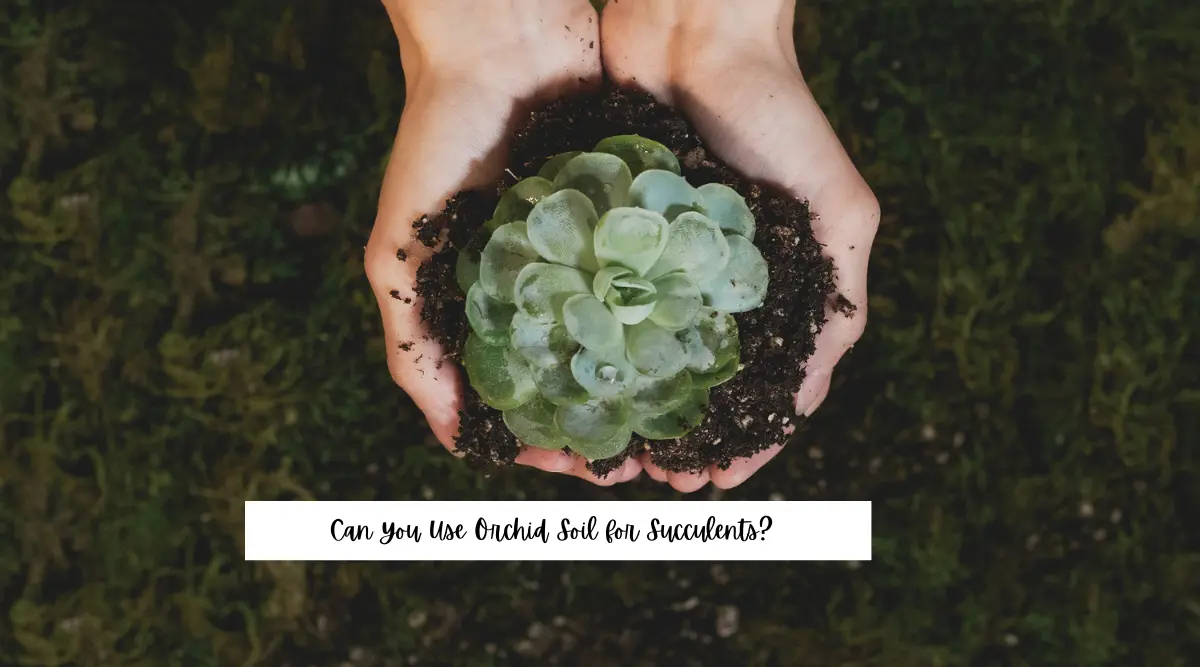Succulents are beloved for their low-maintenance charm, but getting their soil right is key to keeping them happy.
So, Can you use orchid soil for succulents? Yes, you can—but it needs a few tweaks. Orchid soil can work for succulents if you modify it by adding perlite or pumice for better drainage, adjusting the pH, and removing any unsuitable additives.
In this guide, I’ll walk you through why this works, how to do it, and what to watch out for so your succulents thrive.

Why This Matters
Succulents need fast-draining soil to avoid root rot, while orchid soil is designed for moisture-loving epiphytes. Understanding how to bridge that gap can save you time and money.
Here’s what you’ll learn:
- What orchid soil is and how it compare to succulent soil.
- The pros and cons of using it for succulents.
- A step-by-step guide to making orchid soil succulent-friendly.
- Answers to common questions about this unconventional mix.
Let’s dig in!
What Are Succulents and Their Soil Needs?
Succulents store water in their leaves and stems, making them drought-tolerant but sensitive to overwatering.
Their ideal soil:
- Drains quickly to prevent soggy roots.
- Has a coarse texture for aeration.
- Contains minimal nutrients (they don’t need much).
Indoor succulents, especially, need extra drainage since pots limit water escape. Could orchid soil fit the bill? Let’s find out.
What Is Orchid Soil?
Orchid soil isn’t “soil” in the traditional sense—it’s a potting mix for epiphytic orchids that grow on other plants. It typically includes:
- Bark: Provides aeration and drainage.
- Perlite or Charcoal: Boosts airflow and prevents compaction.
- Coconut Husks or Sphagnum Moss: Retains some moisture.
With a slightly acidic pH (5.5–6.5), it’s tailored for orchids but shares some traits with succulent soil—like good drainage. However, it may hold more moisture than succulents prefer.
Here is What You Need to Know While Using Orchid Soil for Succulents
You can use it, but not straight out of the bag. Orchid soil’s drainage is a plus, but its moisture retention and pH might not suit all succulents.
Here’s why it can work with adjustments:
Pros
- Excellent drainage from bark and perlite.
- Organic matter adds a slight nutrient value.
- Readily available for plant enthusiasts.
Cons
- It may retain too much water for desert succulents.
- pH might be too acidic (succulents prefer neutral to slightly acidic).
- Large bark pieces can hinder root growth.
Comparison Table: Orchid Soil vs Succulent Soil
| Feature | Orchid Soil | Succulent Soil |
|---|---|---|
| Composition | Bark, perlite, moss | Sand, perlite, soil |
| Drainage | Good | Excellent |
| Moisture Retention | Moderate | Low |
| pH Level | 5.5–6.5 (acidic) | 6.0–7.0 (neutral) |
How to Modify Orchid Soil for Succulents
Here’s a simple guide to adapting orchid soil:
- Start with Orchid Soil: Use it as your base.
- Add Drainage Materials: Mix in 50% perlite or pumice to speed up water flow.
- Adjust pH: Test with a soil kit; add limestone if it’s below 6.0.
- Remove Debris: Pick out large bark chunks or moss that hold water.
- Optional Boost: Add coarse sand for extra grit.
Ratio Tip: Aim for 1 part orchid soil to 1 part perlite/pumice for most succulents.
Conclusion
In a pinch, orchid soil can be a lifesaver for your succulents—if you tweak it right.
By boosting drainage and fine-tuning the mix, you can turn it into a succulent-friendly medium.
Have you tried this combo before? Let me know in the comments—I’d love to hear your experiences!
